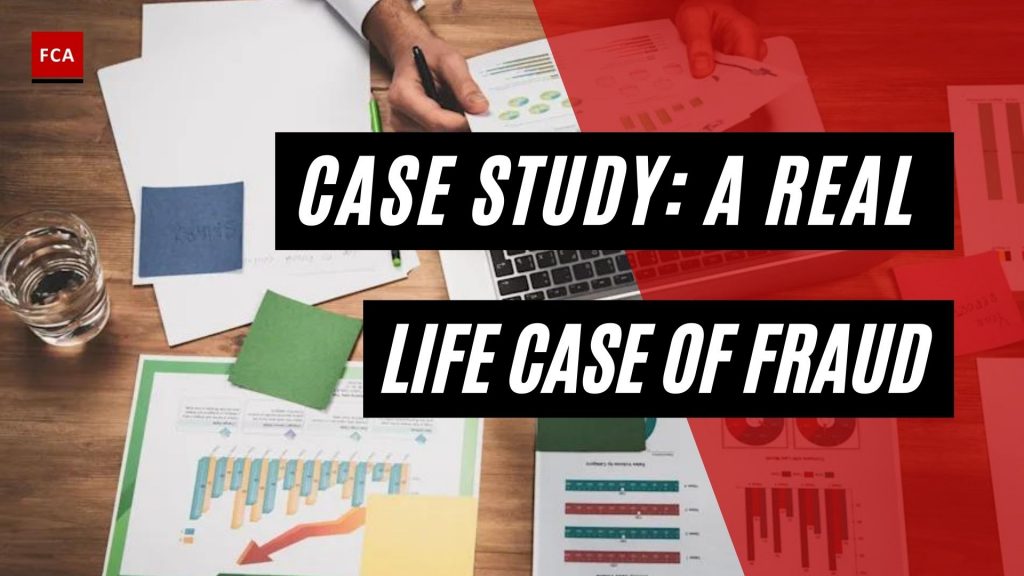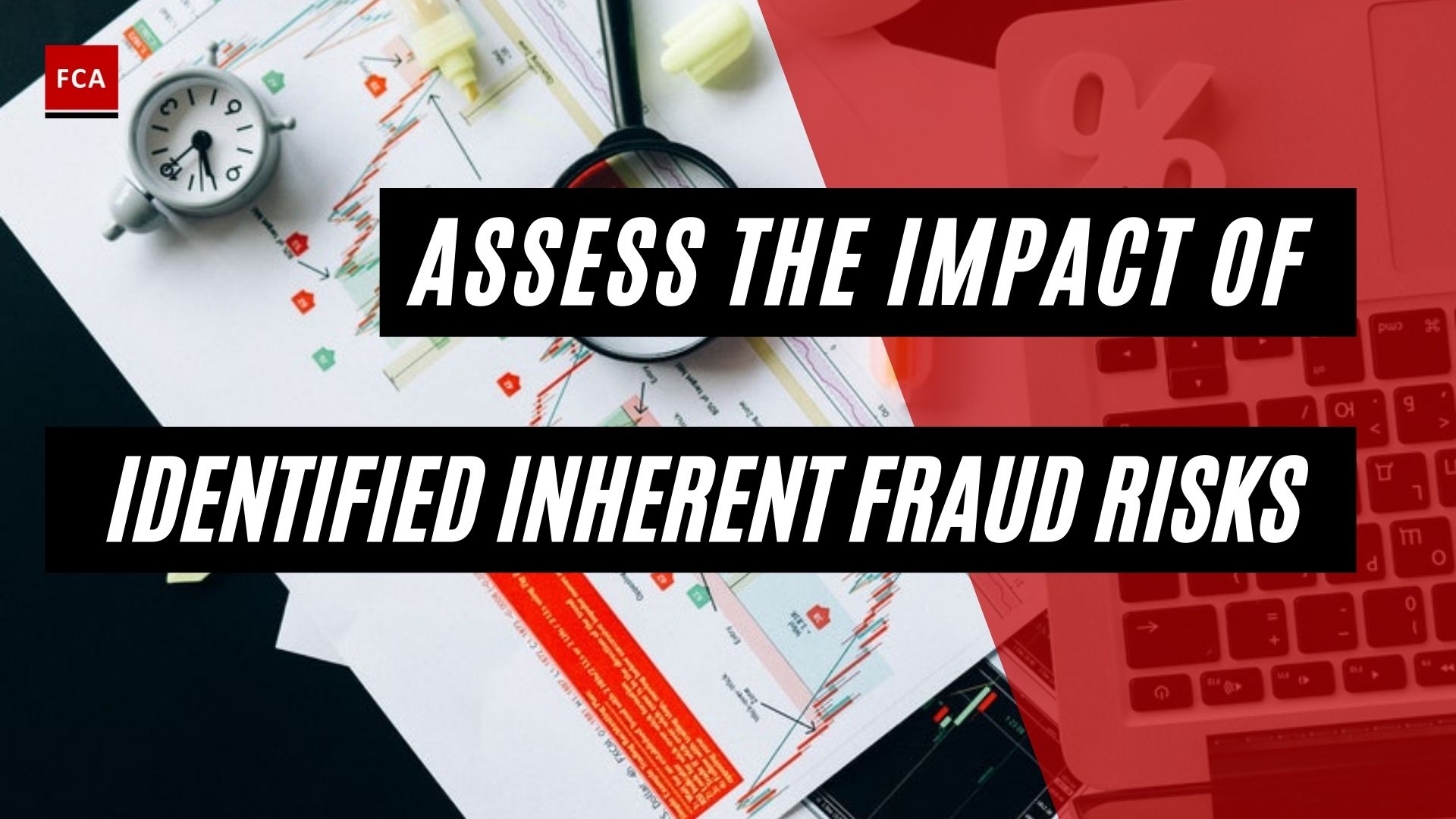In a world where financial transactions are increasingly complex and technology-driven, understanding the dangers of fraud and its consequences is more important than ever. In this blog post, we’ll unravel the anatomy of fraud, explore its impact on various stakeholders, delve into some of the most notorious company fraud case study examples in history, and provide strategies and best practices to prevent it. Join us on this eye-opening journey to better comprehend the risks and ramifications associated with fraud, and learn how we can collectively work towards a more transparent and ethical financial landscape.
Key Takeaways
Fraud is a global issue with far-reaching impacts on stakeholders, including eroded trust and financial losses.
Organizations must implement fortifying internal controls, foster a culture of ethics and transparency, and maintain regular audits to prevent fraud.
Notable cases in history demonstrate the necessity for vigilance in detecting fraudulent activities before they cause significant damage.
The Anatomy of Fraud
Fraud is a pervasive and insidious threat, capable of wreaking havoc on businesses, investors, employees, and entire industries. Fraud revolves around the idea of deceiving another party with wrong information. This can take the form of either misrepresentation of facts or intentionally hiding certain details in order to get a benefit that would not have been granted without deception.
A deeper understanding of fraud and its various forms can be achieved by dissecting its different phases – initiation to discovery, which involves motives, opportunities, concealment, and red flags. This process is akin to peeling back the layers of an onion, revealing the core elements that constitute fraudulent activities. It begins with the initiation phase, where motives and opportunities converge to create a breeding ground for deceit. This is followed by the escalation phase where the fraudster conceals their actions and manipulates information to avoid detection. Finally, the discovery phase involves the identification of red flags and initiation of investigations, culminating in the unmasking of the fraud. Each phase plays a critical role in the fraud lifecycle and understanding them can provide valuable insights into the prevention, detection, and mitigation of fraud.
Initiation: Motives and Opportunities
Behind every fraudulent act, there are often driving forces that compel individuals to engage in deceitful activities. Dr. developed the Fraud Triangle model. It attempts to explain the mindset of a person who may commit fraud. Donald Cressey highlights three elements of fraud: unshareable financial need, perceived opportunity, and rationalization. Financial pressures such as debt or the need to maintain a certain lifestyle may lead to unshareable financial needs, which can sometimes be associated with criminal enterprises.
Fraudulent opportunities may stem from access to sensitive resources like Social Security Numbers, or the power to manipulate data affecting a company’s share price. Efficient communication across personnel, hierarchical levels, and departments in an organization is key to preventing misallocation of public funds and formulating effective risk mitigation strategies.
Escalation: Concealment and Manipulation
As fraudulent schemes unfold, perpetrators often resort to various tactics to conceal their actions and avoid detection. These methods can include telemedicine, social media accounts, and financial accounting practices. For instance, the U.S. Department of Justice reported losses of $1.1 billion from telemedicine fraud schemes in September 2021, while Americanas SA was found to have concealed over 20 billion reais ($3.9 billion) of debt using supplier financing.
In some cases, fraudsters may even resort to more extreme measures to evade identification. The Treaty of Utrecht in 1720, one of the earliest recorded instances of accounting fraud, demonstrates how unscrupulous individuals have been manipulating financial records for centuries. The consequences of these concealment and manipulation tactics can be disastrous, causing significant financial losses, reputational damage, and regulatory repercussions.
Discovery: Red Flags and Investigations
Detecting fraud requires vigilance and a keen eye for potential warning signs. Red flags can include misaligned resources, lack of training, supervision, or quality-control mechanisms that could suggest an environment ripe for securities fraud. The emergence of suspicions warrants the initiation of comprehensive investigations to expose any fraudulent activities.
Some of the most infamous fraud cases in history, such as the Enron scandal, WorldCom debacle, and Bernie Madoff’s Ponzi scheme, were eventually exposed through persistent investigations. These cases serve as cautionary tales, emphasizing the importance of detecting and addressing fraud in a timely manner to minimize its impact on stakeholders and uphold the integrity of financial markets.
The Impact of Fraud on Stakeholders

The repercussions of fraud extend far beyond the perpetrators, affecting a wide range of stakeholders, including investors, employees, and the industry as a whole. These stakeholders often bear the brunt of fraudulent activities, suffering from eroded trust, financial losses, and in some cases, job loss. Investors, for instance, can experience a significant decline in their investment value, leading to substantial financial losses. Employees may face job loss or damage to their professional reputation, which can have long-term impacts on their career prospects. The industry as a whole may also suffer from increased regulatory scrutiny and a loss of public trust, which can lead to market instability and reduced investment.
Subsequent sections will delve into the repercussions of fraud on stakeholders, highlighting how deceitful actions can lead to trust erosion, financial losses, job losses, and reputational damage.
Investors: Eroded Trust and Financial Losses
Investors often bear the brunt of fraud, suffering from eroded trust and significant financial losses. High-profile cases like the Enron scandal and WorldCom debacle serve as stark reminders of the potential consequences of fraud on investors. In the Enron scandal, investors witnessed a dramatic decrease in share prices, plummeting from approximately $90 to less than $1 within a year.
Moreover, fraud can cause investors to withdraw from the market, leading to a decline in investments and a shift in assets from investment advisers to cash deposits at banks. The effects of fraud on investors highlight the importance of recognizing the risks involved in investing and taking necessary precautions to safeguard oneself from fraudulent activities and potential financial loss.
Employees: Job Losses and Reputation Damage
Employees also suffer the consequences of fraud, as they may face job termination and a tarnished reputation. In the aftermath of the WorldCom scandal, approximately 30,000 individuals lost their jobs, and investors incurred losses of approximately $180 billion. The effects of fraud on employees can be long-lasting, with unfavorable publicity, decreased trust, and difficulty securing future employment.
Creating a culture of transparency and ethics within a company can help mitigate the risk of fraud and its consequences on employees. By fostering an environment that encourages open communication and reporting of suspicious activities, organizations can reduce the likelihood of fraud and protect the well-being of their employees.
Industry: Regulatory Changes and Market Volatility
Fraud has far-reaching implications for the industry as well, leading to heightened regulation and market instability. The Enron scandal, in particular, had a significant impact on the industry, resulting in the passage of the Sarbanes-Oxley Act, which imposed stricter regulations on financial reporting and internal controls for public companies.
Additionally, fraud can exacerbate market volatility, as investors become more cautious and skeptical about the security of their investments. Understanding the potential consequences of fraud on the industry is critical for organizations and regulators alike, as they work together to create a transparent and ethical financial landscape that promotes trust and stability.
Notable Fraud Cases in History

This section will scrutinize some of the most infamous fraud cases in history such as the Enron scandal, WorldCom debacle, and Bernie Madoff’s Ponzi scheme. These cases serve as a stark reminder of the devastating consequences of fraud and the importance of vigilance in detecting and preventing it.
Enron Scandal: A Collapse of Epic Proportions
The Enron scandal remains one of the most infamous cases of corporate fraud in history. Formed in 1985 by Kenneth Lay, Enron was initially involved in natural gas transmission. However, under the leadership of Jeffrey Skilling, the company transitioned into a trader of energy derivative contracts, leading to a culture of intense competition and deceptive accounting practices.
The scandal came to light when Sherron Watkins, an employee, exposed the fraudulent activities after becoming suspicious of the company’s high stock prices. The fallout was monumental, with Enron’s collapse causing significant financial losses for shareholders and employees, as well as eroding public confidence in corporate America. The scandal ultimately led to the passage of the Sarbanes-Oxley Act, aimed at preventing similar corporate malfeasance in the future.
WorldCom Debacle: The Largest Bankruptcy in U.S. History
The WorldCom debacle is another prime example of corporate fraud, with the telecommunications company inflating its assets by approximately $11 billion and recording false entries to boost revenues. This scandal led to the largest bankruptcy in U.S. history and resulted in severe penalties for the company’s key figures, including CEO Bernie Ebbers, who was sentenced to 25 years in prison.
The consequences of the WorldCom debacle were far-reaching, including:
Thousands of employees losing their jobs
Investors suffering substantial financial losses
Increased scrutiny on the telecommunications industry as a whole
The case serves as a reminder of the importance of transparency and accountability in the corporate world, as well as the need for robust internal controls and audits to detect and prevent fraud.
Bernie Madoff’s Ponzi Scheme: The Biggest Fraud in Wall Street History
Bernie Madoff’s Ponzi scheme stands as the largest financial fraud in history, orchestrated by the American financier who promised unusually consistent annual returns of around 10%. Through this scheme, Madoff defrauded investors of an estimated $64.8 billion, causing immense financial losses and shaking the financial world to its core.
The impact of Madoff’s Ponzi scheme was vast, leading to a decrease in investor confidence in the financial system and prompting regulatory entities to enact new rules and regulations to prevent similar frauds from occurring in the future. This case highlights the importance of vigilance in detecting and preventing fraud, as well as the need for robust internal controls, ethical culture, and regular audits to ensure the accuracy of financial reporting.
Preventing Fraud: Strategies and Best Practices
Despite the devastating consequences of fraud, it can be prevented through several strategies and best practices. These include fortifying internal controls, fostering a culture of ethics and transparency, and maintaining regular audits and monitoring.
Fortifying internal controls involves implementing robust systems that ensure proper authorization, recording, and reporting of financial transactions. This measure serves as a first line of defense against fraudulent activities. Fostering a culture of ethics and transparency encourages honesty and integrity within an organization. This involves creating an environment where employees feel comfortable reporting suspicious activities without fear of retaliation. Maintaining regular audits and monitoring is another critical step in fraud prevention. Regular audits help identify any discrepancies or irregularities that could indicate fraudulent activities. Monitoring, on the other hand, ensures ongoing oversight of an organization’s operations and financial transactions.
By implementing these strategies and best practices, organizations can significantly reduce their vulnerability to fraud, safeguarding their assets and reputation in the process. This proactive approach to fraud prevention can help create a more secure and stable financial environment. It’s not just about protecting the bottom line, but also about preserving the trust and confidence of stakeholders, which is a crucial aspect of any successful business. By fostering a culture of transparency and ethics, organizations not only deter fraudulent activities but also promote a positive work environment where employees feel valued and heard. Regular audits and monitoring further reinforce this culture by ensuring that all financial activities are conducted with integrity and accuracy. Together, these measures form a comprehensive fraud prevention framework that can help organizations navigate the complex financial landscape with confidence and resilience.
Strengthening Internal Controls
One of the most effective ways to prevent fraud is by implementing robust internal controls, which ensure proper authorization, recording, and reporting of financial transactions. These controls can include:
Segregation of duties
Authorization and approval processes
Physical controls
Monitoring and auditing
By regularly reviewing and updating these controls, organizations can detect and deter fraud, ensuring the accuracy and integrity of their financial records. Moreover, establishing a system of checks and balances is crucial for guaranteeing that all financial activities are accurately recorded and monitored, enabling the swift identification and resolution of any potential cases of fraud. In the wake of high-profile fraud cases such as Enron, the importance of robust internal controls in preventing fraud and maintaining investor confidence cannot be overstated.
Promoting a Culture of Ethics and Transparency
A strong organizational culture that promotes ethics and transparency is essential in preventing fraud and building trust among stakeholders. To achieve this, organizations should:
Establish clear policies and procedures that outline expected ethical conduct.
Provide regular training on ethical behavior to ensure employees understand their responsibilities.
Foster open communication between employees and management, creating an environment where concerns can be raised and addressed. By implementing these measures, organizations can create an environment that encourages ethical behavior and discourages fraudulent activities.
Some of the most successful companies, such as Microsoft, Apple, and Google, have successfully implemented strong internal controls and promoted a culture of ethics and transparency. By following their lead and placing an emphasis on ethical conduct, organizations can minimize the risk of fraud and protect the well-being of their stakeholders, ultimately contributing to the company’s financial health.
Regular Audits and Monitoring
Conducting regular audits and monitoring is another crucial aspect of fraud prevention, as it helps to detect and address any potential fraud in a timely manner. Audits and monitoring can include:
Financial statement audits
Internal audits
External audits
Risk assessments
Data analytics, such as using software to identify irregularities in financial records
The absence of regular audits and monitoring can result in undetected fraud for extended periods, leading to substantial financial losses, reputational damage, and regulatory intervention. By implementing a comprehensive audit and monitoring program, organizations can safeguard their financial health, protect their stakeholders, and maintain the integrity of their financial reporting.
Legal Ramifications and Enforcement Actions

As we have seen throughout this blog post, the legal consequences of fraud can be severe, ranging from criminal penalties and civil litigation to regulatory enforcement actions. This section will focus on the diverse legal implications of fraud and the enforcement actions pursued by authorities to counter and deter fraudulent activities.
Criminal Charges and Civil Lawsuits
Fraud can result in a wide range of criminal charges, including:
Fraudulent schemes or practices
False pretenses
Forgery
Identity theft
Embezzlement
Money laundering
Conspiracy to commit fraud
Other related offenses
Those found guilty of fraud can face imprisonment, fines, and restitution orders, with the severity of the penalties depending on the type of fraud, the number of victims, and the amount of financial loss. In addition to criminal charges, civil lawsuits may also result from fraud, including:
breach of fiduciary duty
negligence
breach of contract
and others
These legal actions can lead to financial consequences for the perpetrator, as well as restitution for the victims.
SEC Enforcement Actions
The Securities and Exchange Commission (SEC) plays a critical role in enforcing securities laws and combating fraud by implementing enforcement actions to ensure that individuals and companies comply with the law and to prevent future violations. These actions may include:
Filing civil lawsuits in federal court
Issuing opinions and orders in administrative proceedings
Imposing penalties and sanctions on individuals and companies that have violated securities laws
The SEC’s enforcement actions aim to protect investors, maintain fair and orderly markets, and promote transparency and integrity in the securities industry. By holding individuals and companies accountable for their actions and deterring future misconduct, the SEC helps to safeguard the financial well-being of all stakeholders.
Restitution and Asset Recovery
In cases where fraud has resulted in financial losses for victims, restitution and asset recovery can play an important role in compensating for these losses. Restitution involves providing compensation to the victim or returning property to its rightful owner, while asset recovery entails identifying and tracing stolen or misappropriated assets to their present location, and then taking legal action to recover them.
The process of providing restitution to victims of fraud can be complex, necessitating the determination of financial losses and the appropriate method of remittance, such as a lump sum or recurring payments. By understanding the legal ramifications of fraud and the various enforcement actions available, organizations and individuals can better protect themselves from the risks associated with fraudulent activities.
Summary and Conclusion
In conclusion, understanding and preventing fraud is a vital aspect of maintaining the integrity of our financial system and protecting the well-being of all stakeholders involved. By dissecting the anatomy of fraud, examining its impact on investors, employees, and the industry, and exploring strategies and best practices for prevention, we can collectively work towards a more transparent and ethical financial landscape.
As we have seen through the notable cases of Enron, WorldCom, and Bernie Madoff, the consequences of fraud can be devastating and far-reaching, making the fight against it a crucial aspect of our ongoing efforts to promote trust and stability in the financial world.
Frequently Asked Questions
This section will answer frequently asked questions about fraud and its prevention, offering additional insights for those keen to understand this pervasive issue’s complexities.
What is an example of an organization that has committed fraud?
An example of an organization that has committed fraud is Enron, which was involved in an extensive accounting scandal that led to its downfall in 2001. The company concealed large debts from its balance sheet, leading to significant financial losses for shareholders and employees, as well as eroding public confidence in corporate America. While not directly linked to organized crime, this case of fraud serves as a cautionary tale for businesses and regulators alike. The accounting scandals were a major blow to the accounting industry, as they highlighted the need for greater transparency and oversight within accounting firms.
What is the biggest fraud case in history?
The biggest fraud case in history is the Bernie Madoff Ponzi scheme, in which Madoff orchestrated an immense investment fraud that caused billions of dollars in losses for investors. This scheme, which promised unusually consistent annual returns of around 10%, resulted in Madoff’s conviction and served as a cautionary tale about the dangers of fraud and the importance of vigilance in detecting and preventing it. Investors should be aware of the risks associated with investing in the stock market and take steps to protect themselves.
What is the most common type of fraud observed today?
The most common types of fraud observed today include:
Imposter scams: involve perpetrators impersonating legitimate entities to acquire personal information or funds
Online shopping scams: deceive individuals into providing confidential information or payment details through fake websites or emails
Identity theft: involves the unauthorized use of someone’s personal information for fraudulent purposes
Identity theft occurs when criminals use stolen personal information to commit fraud or other offenses.
What type of crime is fraud?
Fraud is a white-collar crime in which false statements, lies or misrepresentations are used to deceive another individual or entity to obtain a financial or other gain. Fraud can be damaging and lead to the loss of a life investment without any bodily injuries.









